Broken tines stop play
This week: Broken tines stop play; Time to change; Forest fungi; Spring into winter;
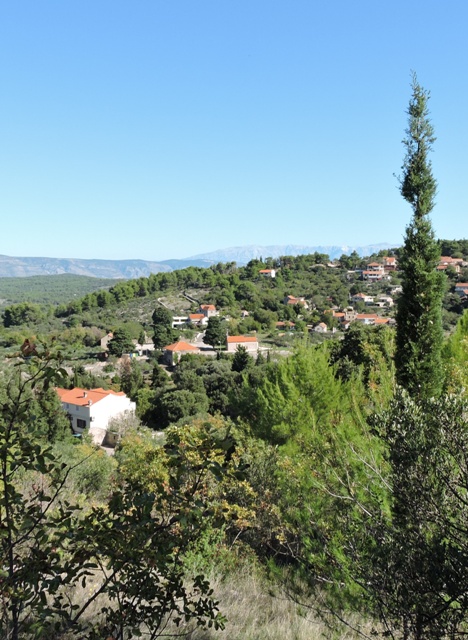
I’ve had my annual flu vaccination. The vials of vaccine arrived at my local doctors surgery at lunch time on Monday and by 19:00 the entire supply had been used up.
COVID-19 is in the villages surrounding Dol, with a number of people being required to isolate. The transmission between people seems to be happening inside homes, at family gatherings and parties, all of which I am avoiding.
As the number of daily infections across the country continues to increase, there are gradually more stringent measures being put in place. The government this week said that they will introduce lockdowns and curfews if the virus gets out of hand.
As at Saturday morning, there are 267 cases per 100K population, one of the higher numbers in Europe, and 2.4 deaths per 100K population, also near the top of the European list .
The number of new daily cases recorded yesterday is greater than at any previous time in the pandemic, with 2,242 new cases and 16 deaths.
The one thing that is for certain is that we, like everywhere, are going to have a difficult winter.
Sitting at the computer in my study at just after 4pm on Friday, I felt a slight rumble and I heard the beams in the roof above me creak. I knew it was just a small earth tremor.
Checking at the European Earthquake Centre, it was a magnitude 3.5 quake, just to the south west of Mostar, in Bosnia and Herzegovina, some 70 kilometres to the ENE of my home.
It’s a reminder of why my new building has so much steel in it, to meet the current building regulations for protection against earthquake damage.
Broken tines stop play
Taking advantage of the lovely autumnal sunshine this week, I’ve been clearing weeds from the end of one of my orchards.
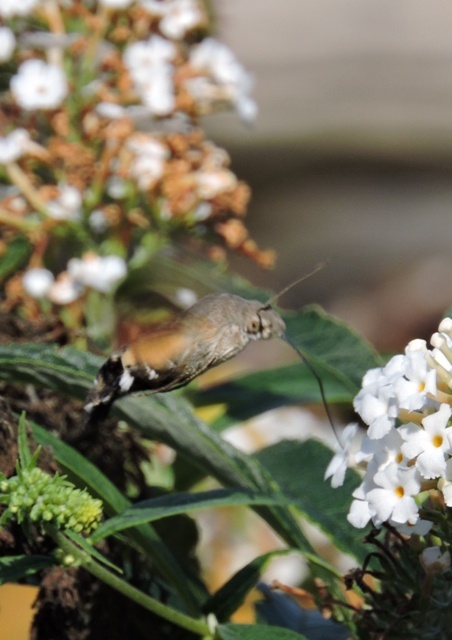
The term “Weeds” is a misnomer, because they were mainly brambles but also some Ivy, with just a few grasses of various types. This was not the usual tangle of multiple weedlings that I have in other orchards, rather the brambles have choked everything else out.
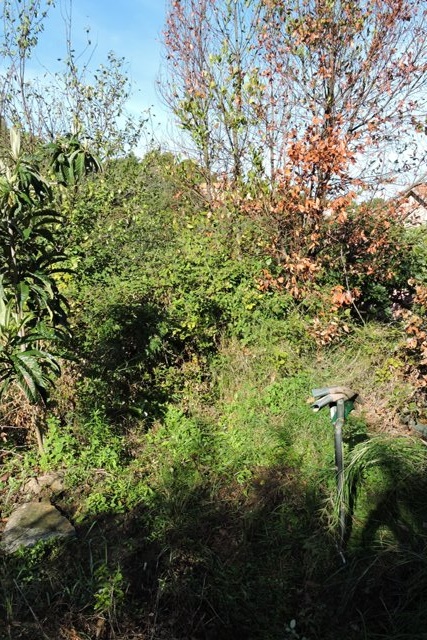
Starting in a corner is always a good idea. This is all about psychology and motivation.
Corners are small, so once you have made a start, you can immediately see some improvement.
As you gradually clear away from the corner, the area that is clear grows exponentially bigger, so you seem to have done more than perhaps you actually have – a bit more positive reinforcement!
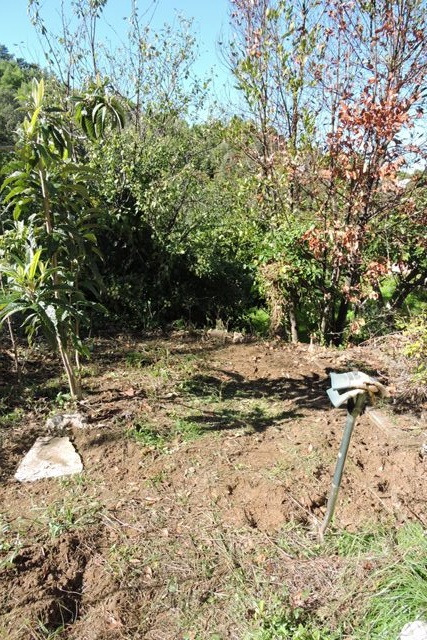
Lastly, a bit like a jigsaw puzzle, if you get the corners and edges in place, doing the middle bits always seems that bit easier.
I was using a digging fork, the first tool I bought here when I was waiting for my container to arrive.
This was (I’m using the past tense now) stainless steel with an Ash handle and was just the right weight. I’ve used it many times when trying to remove stubborn roots, or to break hard clay clods of earth.
There was a clump of grass which wouldn’t pull out by hand, so I dug round it with the fork, then slipping the tines under the clump, I pushed down on the handle. I expected the clump to be easily levers out of the ground. Instead, the fork gave way.
I didn’t fall over or anything – I wasn’t using a great deal of force, as the clump was not large, just surface rooting and I didn’t expect any difficulty.
Removing the fork, I saw that the weld at the base of the handle had broken, like an open hinge. Inside the metal was seriously corroded with no metal connection at the front. This was why it gave way when I pushed down.

I believed the fork was stainless steel and that the tines and the handle fixing had been forged as a single piece of metal.
I’m not a metallurgist, but I know stainless steel doesn’t rust and can now see the tines and the handle docket have been welded together.
The fork failed at the weld where it seems to have corroded from the inside, thinning the metal until just a bit of pressure caused it to break. It has been “garaged” throughout it’s life in the shed, so it has not been left out in the elements..
I don’t have a welding set, but there is a man in the village who does, so I’ll take the fork along to him to see what he thinks about a repair. However the breakage did stop play.
Although I have a Spear & Jackson border fork, it has small tines so it is OK for working between plants and shrubs, but is not much use in a big area.
I used he border form to dig out the roots of the brambles and other weeds with long tap roots, but have left some of the thick clumps of grass.
At least at the end of the week, I can see a lot of progress even if the failure stopped play for a while…
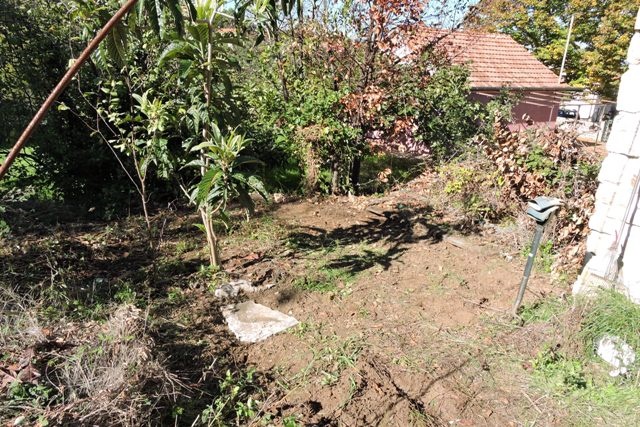
Time to change
Where does time go?
Tomorrow morning at 02:00 CEST, the clocks go back an hour. It is the end of European summer daylight saving time. To me this always seems to signal the end of autumn and the start of winter, as lights are needed from 17:00, or earlier on dark October days (like today).
It does not seem long since we moved the clocks forward an hour at the end of March, and in just five months we will change once again.
This should have been the last autumn change to the clocks, but those proposed Europe wide plans to abolish clock changes in 2021 have been put on hold as a result of the COVID pandemic.
In March 2019 the European Parliament approved a proposal stating that seasonal clock changes – spring advancing 1 hour, autumn back by one hour – would become a thing of the past from next year. However this week a spokesperson for the Council of the European Union has now confirmed that the move is not currently on the agenda.
So we gain an hour in bed tonight and will lose an hour on the 28th March, 2021. Even so the end of twice yearly time changes in Europe is still likely to happen .
But for now, this issue is far from being on anyone’s priorities list as COVID-19 rages across the continent.
Forest fungi
While the sun was still warm, I took one of my favourite walks through the Maquis this week.
On the edge of the pines, I found lots of mushrooms growing.
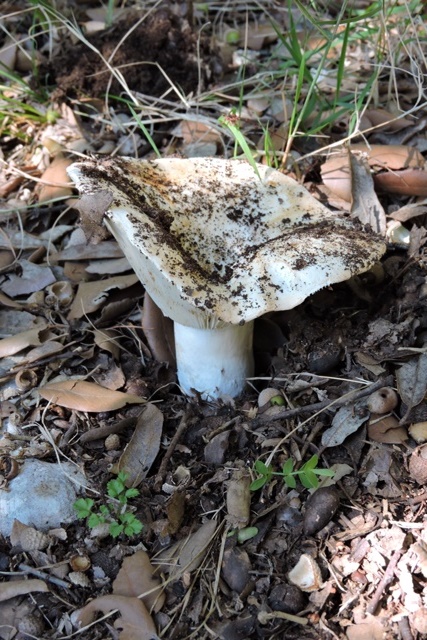
I do like mushrooms, but I am very wary of anything I find in the field, so I brought one home to a neighbour who does hunt, cook and eat the local edible fungi.
Ruža shook her head and said that whilst it looked like an edible variety, she wasn’t sure and would not try it. I put it on the compost heap, perhaps to drop it’s spores and start a new colony.
I did find a very informative web page though, on all the edible fungi in Croatia. From the photographs I think it is a Lactifluus piperatus (Paprena Mliječnica), or peppery milkcap so called because of the white milk it bleeds when cut.
Next time I am out that way on the path, I will cut one and see.
Something else unusual I spotted were these faded scarlet pitchers on a wayside shrub.
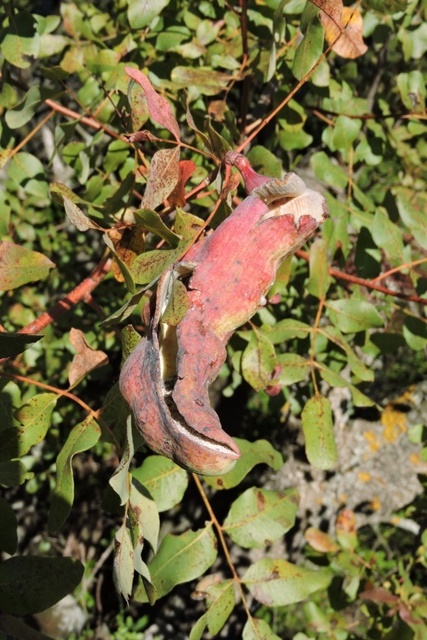
I have seen the 2.5 tall metre shrub, before, but never with flowers or pitchers. It looks rather like a Manila Tamarind, but the leaves are wrong.
I believe it is an Aristolochia, but which one? There are some 500 in the genus. More research is required.
The flowers are not to trap and feed on insects, but rather to attract insects to feed on nectar. Then with a dusting of pollen on them from hairs on the inside of the pitcher, the visiting insect will pollinate other flowers.
Spring into winter
“Curiouser and curiouser!” Cried Alice (she was so much surprised, that for the moment she quite forgot how to speak good English)
― Lewis Carroll, Alice’s Adventures in Wonderland & Through the Looking-Glass…
Well I am doing my best to ensure that my English can at least be classed as “good”, if not better than good! However I share Alice’s sentiments about the effect that climate change is having on the living world which surrounds Dol.
Although this week has been very warm during the day, for this time of year, and above the seasonal average, the nights are still cool. This is because with gin clear night skies, the heat absorbed by the earth during the day quickly leaches away.
Early in the week I noticed that although more and more leaves were falling from the big Myrobalan plum tree, there was fruit blossom appearing on many of the branches.
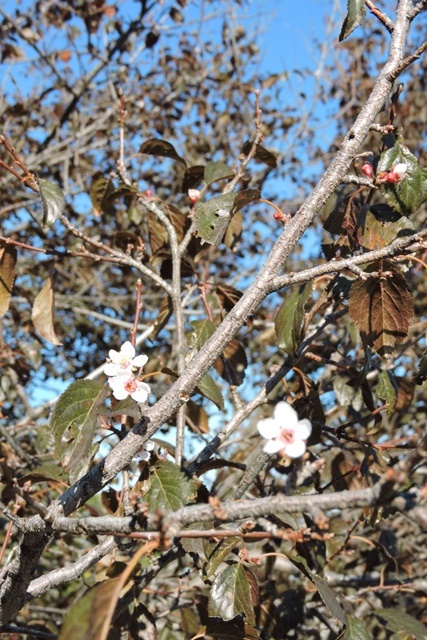
On the lane down towards the olive groves, I saw that there are a couple of trees in a thicket which are covered in white blossom.
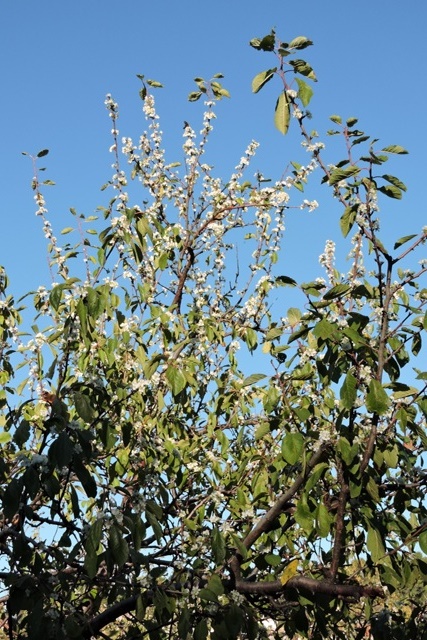
I have not noticed fruit on it in the spring, so I’m not sure what it is.
Then when I was clearing the Top Orchard, I noticed that one of my established plum trees, a variety of Victoria Plum I believe, was also covered in blossom.
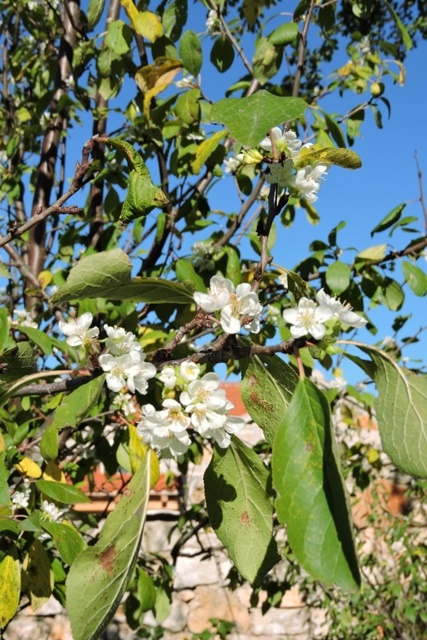
Wandering round the Drupe Orchard several varieties of both apple and pear trees also have blossom fully out, and there are even some new leaves showing. This is just not normal.
In previous years I have noticed the odd pink blossom on the Myrobalan plum, but nothing like the amount that there is at the moment and I’ve never seen blossom on any of my other fruit trees.
There are of course species which normally do start to grow and flower in autumn, after the heat of summer has past and their summer dormancy has been broken. Varieties like the Nispero and of course the citrus trees.
But what it is that is causing so many trees to mistake autumn for spring, I just don’t understand.
One online suggestion is that heat and water stress during the summer, relieved by rain and cooler temperatures can trigger this second blossoming. Those are certainly the conditions we have experienced, but my 20 or 30 year old Myrobalan plum should not be suffering water stress!
The reducing hours of daylight and gradually lowering temperatures are the signals for deciduous plants and trees to begin to shut their systems down and go dormant.
The vessels which convey nutrients made in leaves by photosynthesis constrict, so the leaves change colour, die and break off.
Most trees have a winter chilling requirement. Although I have deliberately planted varieties which need just a minimum number of winter cold hours, we really have not had any yet, so it is something else which has reactivated the plant’s systems, to make them think it is spring.
One possibility is that it has been the warmer autumn weather, combined with early winter rains.
Research is being done by a number of different universities around the world into the molecular pathways which control the process of change in plants and trees, but there is still much that we do not know.
The New Mexico State University horticultural specialist seems to agree, suggesting it is summer stress which causes a second blossoming.
In the meantime, I hope that this sudden burst of energy to come into bud and then flower will not weaken the trees concerned and reduce the blossom on them in the spring next year. NCG
2 Responses
Andy Robinson
I’d lend you a MIG welding set, Norman, but the postage costs might be prohibitive!…..
Norman
Sorry – I have had to turn off the “Comments” because of an attack overnight by spammers.